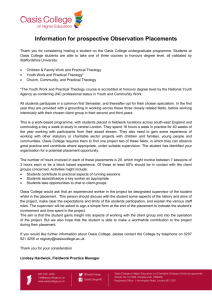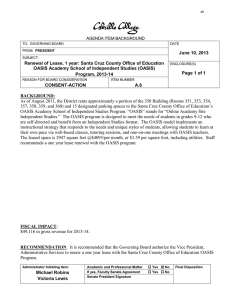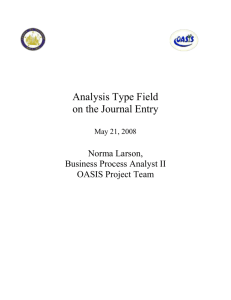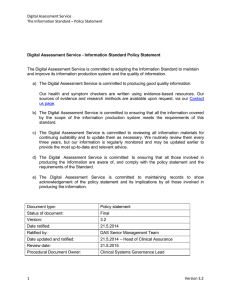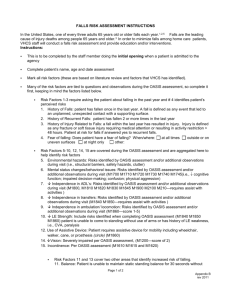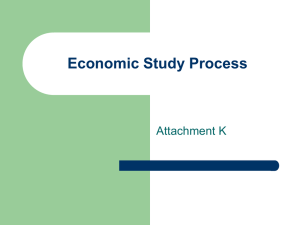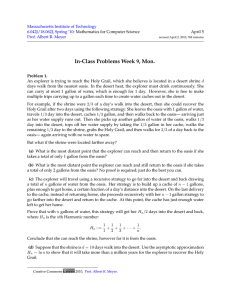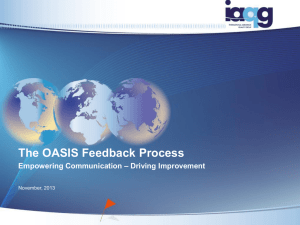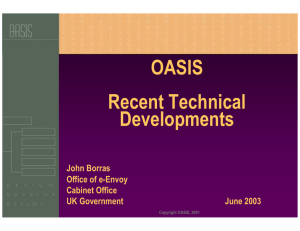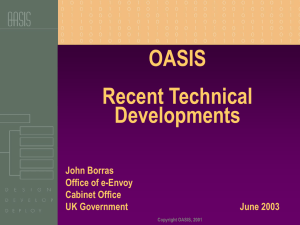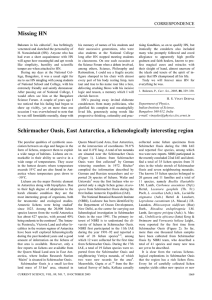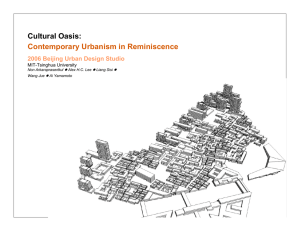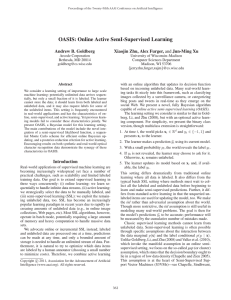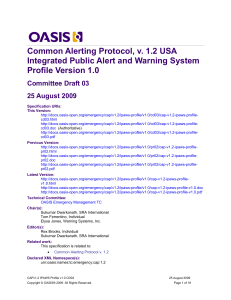Organization for the Advancement of Structured Information Standards (OASIS)
advertisement
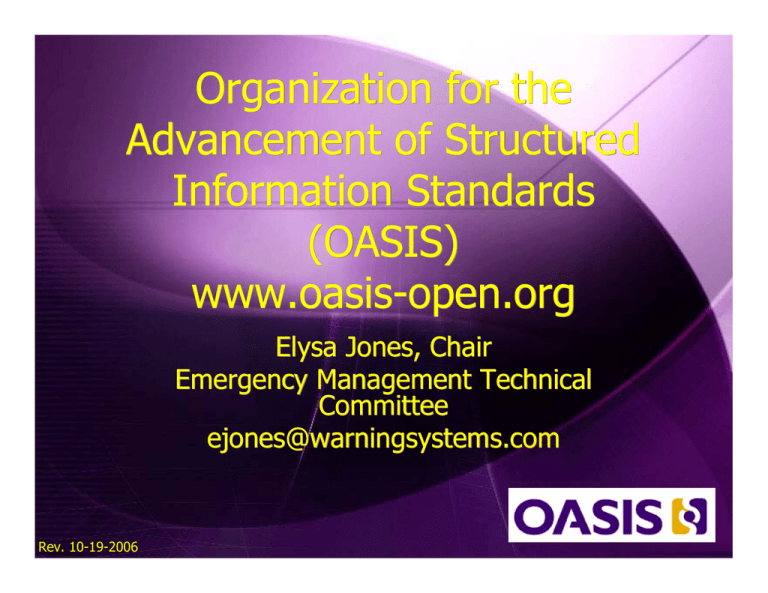
Organization for the Advancement of Structured Information Standards (OASIS) www.oasis-open.org Elysa Jones, Chair Emergency Management Technical Committee ejones@warningsystems.com Rev. 10-19-2006 OASIS Overview Introduction Committee Process Emergency Management Technical Committee Current Standards Work in Progress Example Introduction OASIS is an international body Standards are free and open OASIS Standards are approved within an OASIS Committee, submitted for public review, implemented by at least three organizations, and finally ratified by the Consortium’s membership at large. Membership Liaison Contributors Sponsors Committee Process Charter Committee Draft Public Review Committee Specification OASIS Standard Emergency Management Technical Committee Charter The Technical Committee will apply itself to answering requirements for data exchange among emergency management, public safety, homeland security and related applications and systems. Subcommittee Structure GIS Infrastructure Messaging and Notification Adoption Current Standards Common Alerting Protocol (CAP) 1.0 Simple and standardized format for exchanging alerts and warnings over various types of networks Compatible with legacy and emerging “transport” methods, such as NOAA National Weather Radio specification and Web Services Flexible geographic targeting Phased and delayed effective times and expirations Message update and cancellation features Facility for including inline digital images and audio Ratified April 2004 Significant Uptake Common Alerting Protocol (CAP) 1.1 Added <responseType> element Made <category> element mandatory Amended enumerated values for the <certainty> element Deleted the <password> element Various editorial corrections and clarifications Ratified October 2005 CAP Document Object Model Current Standards (Cont’d) Emergency Data Exchange Language – Distribution Element (EDXL-DE) Overview Open Container Model Provide flexible mechanisms to inform message routing and/or processing decisions Dissemination of messages based on geographic delivery area Use and re-use of data content and models developed by other initiatives Business process-driven specific messaging needs across emergency professions Supporting everyday events and incident preparedness, as well as disasters Facilitate emergency information sharing and data exchange Multi-use format Introduced to the EM-TC November 2004 Two public reviews completed 60-Day August 29 - October 28, 2005 15-Day February 17 - March 4, 2006 Ratified May, 2006 EDXL Distribution Element DOM 0…* <targetArea> <distribution> 0…* <contentObject> 1 <nonXMLContent> OR <xmlContent> Work in Progress Emergency Data Exchange Language – Hospital Availability Exchange (HAVE) Overview The intent of the Hospital AVailability Exchange (HAVE) is to enable the exchange of information related to medical and health organizations and their resources among other hospitals, state health departments and associations, emergency managers, and other responsible emergency agencies involved in response and preparedness. It is designed for everyday use, mass disasters, and preparedness scenarios. Progress Introduced to the EM-TC 1/25/06 Voted to accept 2/7/06 Voted Committee Draft 8/22/06 Public Comment Period Anticipated Nov 1- Dec 30, 2006 Work in Progress - 2 Emergency Data Exchange Language – Resource Message (EDXL-RM) Overview Response to Request Resource Order Resource Dispatch Resource Request for Resource Information (RFI) Response to Request for Resource Information (RFI) Unsolicited Resource Offer Request Resource Release Resource Request to Return Resource Response to Request Return Resource Request Resource Quote Response to Request Resource Quote Request for Resource Status Resource Request Status Introduced to the EM-TC 8/29/05 Voted to accept 9/6/05 Currently in Subcommittee Anticipate Committee Draft Fall 2006 Legacy System Reach Back

